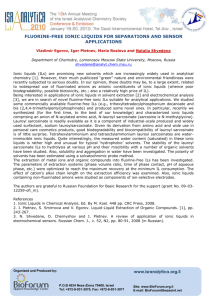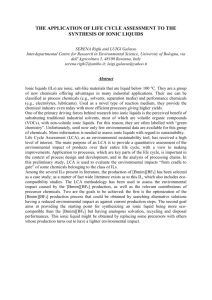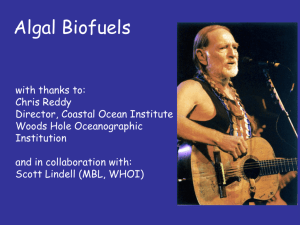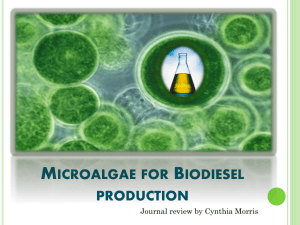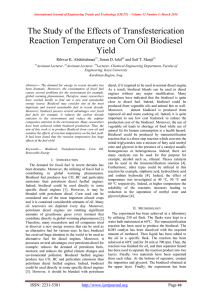mild green biodiesel production
advertisement
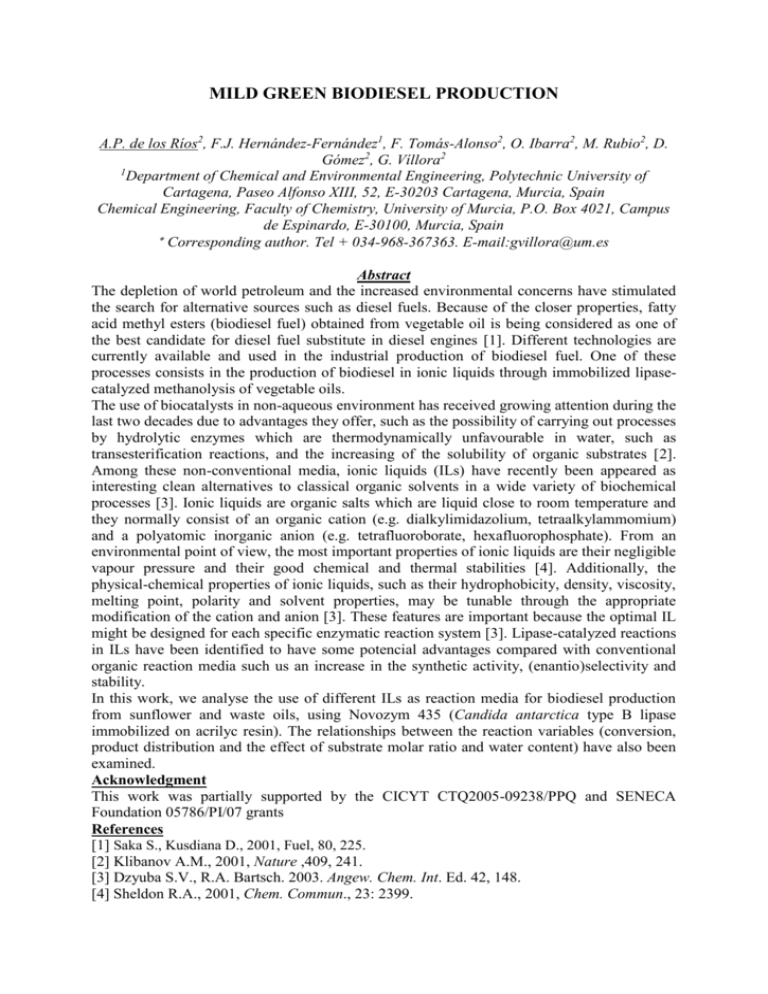
MILD GREEN BIODIESEL PRODUCTION A.P. de los Ríos2, F.J. Hernández-Fernández1, F. Tomás-Alonso2, O. Ibarra2, M. Rubio2, D. Gómez2, G. Víllora2 1 Department of Chemical and Environmental Engineering, Polytechnic University of Cartagena, Paseo Alfonso XIII, 52, E-30203 Cartagena, Murcia, Spain Chemical Engineering, Faculty of Chemistry, University of Murcia, P.O. Box 4021, Campus de Espinardo, E-30100, Murcia, Spain Corresponding author. Tel + 034-968-367363. E-mail:gvillora@um.es Abstract The depletion of world petroleum and the increased environmental concerns have stimulated the search for alternative sources such as diesel fuels. Because of the closer properties, fatty acid methyl esters (biodiesel fuel) obtained from vegetable oil is being considered as one of the best candidate for diesel fuel substitute in diesel engines [1]. Different technologies are currently available and used in the industrial production of biodiesel fuel. One of these processes consists in the production of biodiesel in ionic liquids through immobilized lipasecatalyzed methanolysis of vegetable oils. The use of biocatalysts in non-aqueous environment has received growing attention during the last two decades due to advantages they offer, such as the possibility of carrying out processes by hydrolytic enzymes which are thermodynamically unfavourable in water, such as transesterification reactions, and the increasing of the solubility of organic substrates [2]. Among these non-conventional media, ionic liquids (ILs) have recently been appeared as interesting clean alternatives to classical organic solvents in a wide variety of biochemical processes [3]. Ionic liquids are organic salts which are liquid close to room temperature and they normally consist of an organic cation (e.g. dialkylimidazolium, tetraalkylammomium) and a polyatomic inorganic anion (e.g. tetrafluoroborate, hexafluorophosphate). From an environmental point of view, the most important properties of ionic liquids are their negligible vapour pressure and their good chemical and thermal stabilities [4]. Additionally, the physical-chemical properties of ionic liquids, such as their hydrophobicity, density, viscosity, melting point, polarity and solvent properties, may be tunable through the appropriate modification of the cation and anion [3]. These features are important because the optimal IL might be designed for each specific enzymatic reaction system [3]. Lipase-catalyzed reactions in ILs have been identified to have some potencial advantages compared with conventional organic reaction media such us an increase in the synthetic activity, (enantio)selectivity and stability. In this work, we analyse the use of different ILs as reaction media for biodiesel production from sunflower and waste oils, using Novozym 435 (Candida antarctica type B lipase immobilized on acrilyc resin). The relationships between the reaction variables (conversion, product distribution and the effect of substrate molar ratio and water content) have also been examined. Acknowledgment This work was partially supported by the CICYT CTQ2005-09238/PPQ and SENECA Foundation 05786/PI/07 grants References [1] Saka S., Kusdiana D., 2001, Fuel, 80, 225. [2] Klibanov A.M., 2001, Nature ,409, 241. [3] Dzyuba S.V., R.A. Bartsch. 2003. Angew. Chem. Int. Ed. 42, 148. [4] Sheldon R.A., 2001, Chem. Commun., 23: 2399.



